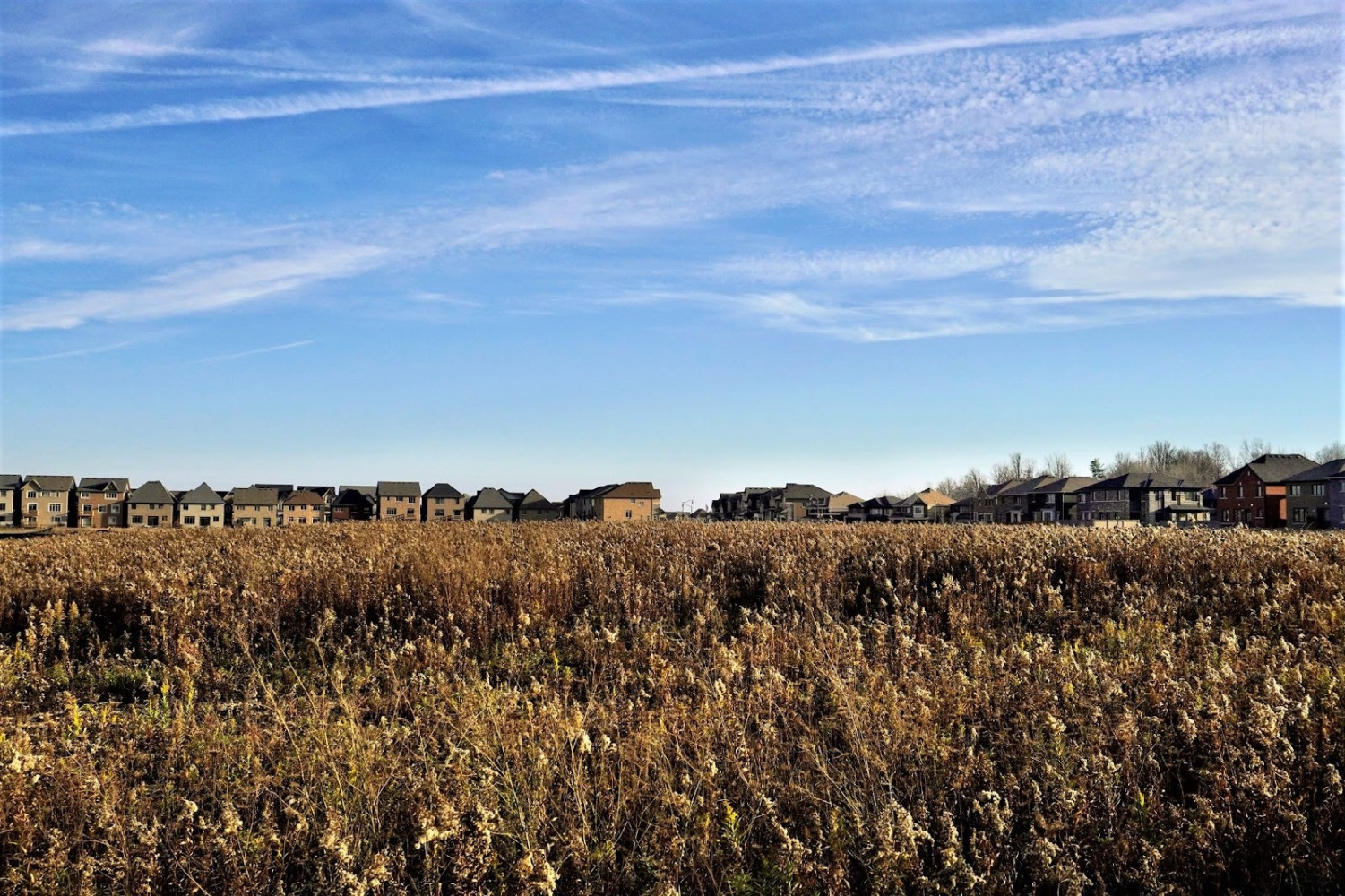
PC housing Bill limits environmental protections, scraps complete communities but farmers win key fight against developers
At Queen’s Park Thursday, farmers won a crucial battle, pushing back decades of relentless growth that has seen much of Southern Ontario transformed into one of the world’s largest stretches of urban landscape.
This connected built form that spans the Greater Golden Horseshoe arcing around Lake Ontario has been shaped over the past 150 years, as agricultural life was swallowed to make way for an industrial future.
Despite the victory by farmers Thursday, to prevent agricultural land from being easily divided for further development, the PCs’ proposed Bill 97 still promises to erase almost two decades of planning progress that combatted the sprawl that had defined Canada’s only mega-region, where approximately one quarter of the country’s population resides.
Since the late 1800s a major shift in the way people lived began to take shape. At the turn of the century, approximately two thirds of Canadians lived in rural areas. By 1971, two thirds of people lived in towns or cities.
Most of this rapid transition away from agricultural communities was not concentrated within town or city centres. As transportation improved, first with trains in the 19th century, followed by the swift takeover of cars in the pre and post-war era, suburbs emerged as king.
People chose to leave crowded industrial cities — populated by the less affluent working class — and gradually left the more isolated locales that dotted rural farmscapes, opting for a happy middle ground.
Examples of these suburban oases sprung up in Mississauga and Brampton. From their rural roots these two suburbs are now two of Canada’s largest cities, with a combined population of about 1.5 million residents, larger than all but four provinces. Subdivisions built around the car have defined the two municipalities.
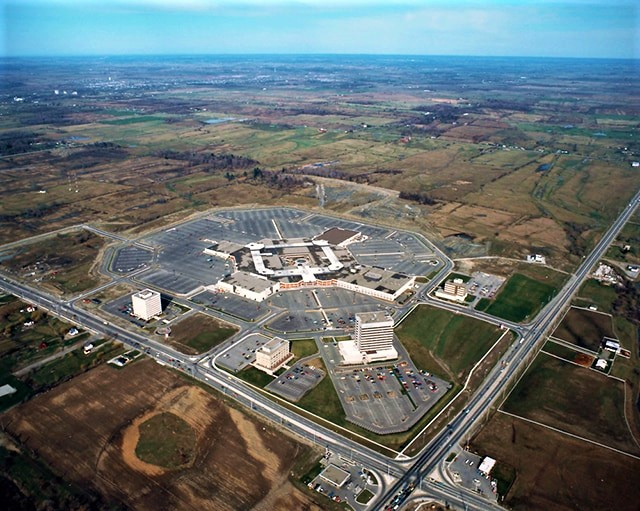
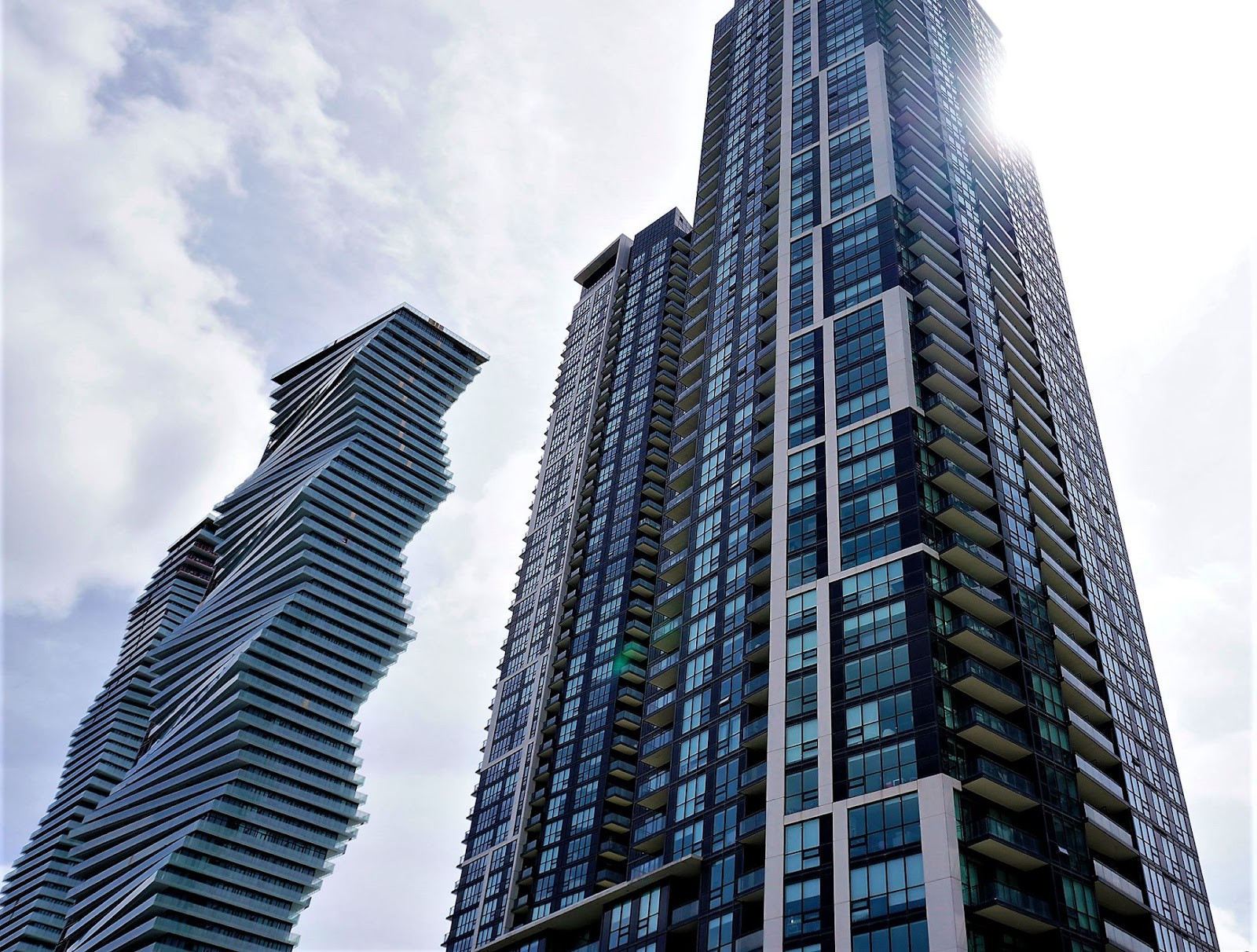
In the ‘70s, there was no downtown Mississauga, just the Square One Mall surrounded by farmland; 50 years later, it has a busy city centre filled with high rises.
(City of Mississauga/Alexis Wright-The Pointer)
Fast forward to today and sprawl has been replaced by verticality in Mississauga’s downtown core as complete communities have been transplanted from urban centres to the former suburbs now transforming into their own standalone destinations.
But the PC government’s proposed Bill 97, which stands to alter provincial legislation to pave the way for housing targets under Bill 23, will make these kinds of sustainable communities nearly impossible.
Critics warn the Bill moves growth away from sustainable density, the type of “missing middle” housing seen in townhome developments, row houses and multiplexes of two-to-six storeys. Instead, it makes it easier for developers to push hyper verticality or sprawl, two ends of the planning spectrum that move communities away from human-scale smart growth, according to planners and advocates who have criticized the proposed Bill.
The legislation proposes three key changes: removing existing employment designations so those lands can be used for residential units; making it easier for height restrictions on high-rise applications in certain corridors to be ignored; and allowing agricultural lands (previously protected from development through restrictions on how they could be divided) to be opened up for residential growth.
On Thursday, farmers won a huge victory, as the PCs walked back proposed provisions that paved the way for the third of the three key planning changes (The Pointer will detail that decision in an upcoming article).
But in support of the proposed Bill 97 the PCs are establishing a new Provincial Planning Statement (PPS 2023) that will radically alter the previous Places to Grow Act aimed at forcing developers to create complete communities, instead of the subdivision sprawl that defined post-war planning across Southern Ontario. Now, the suite of legislative moves pushed by the PCs promises a return to that style of growth.
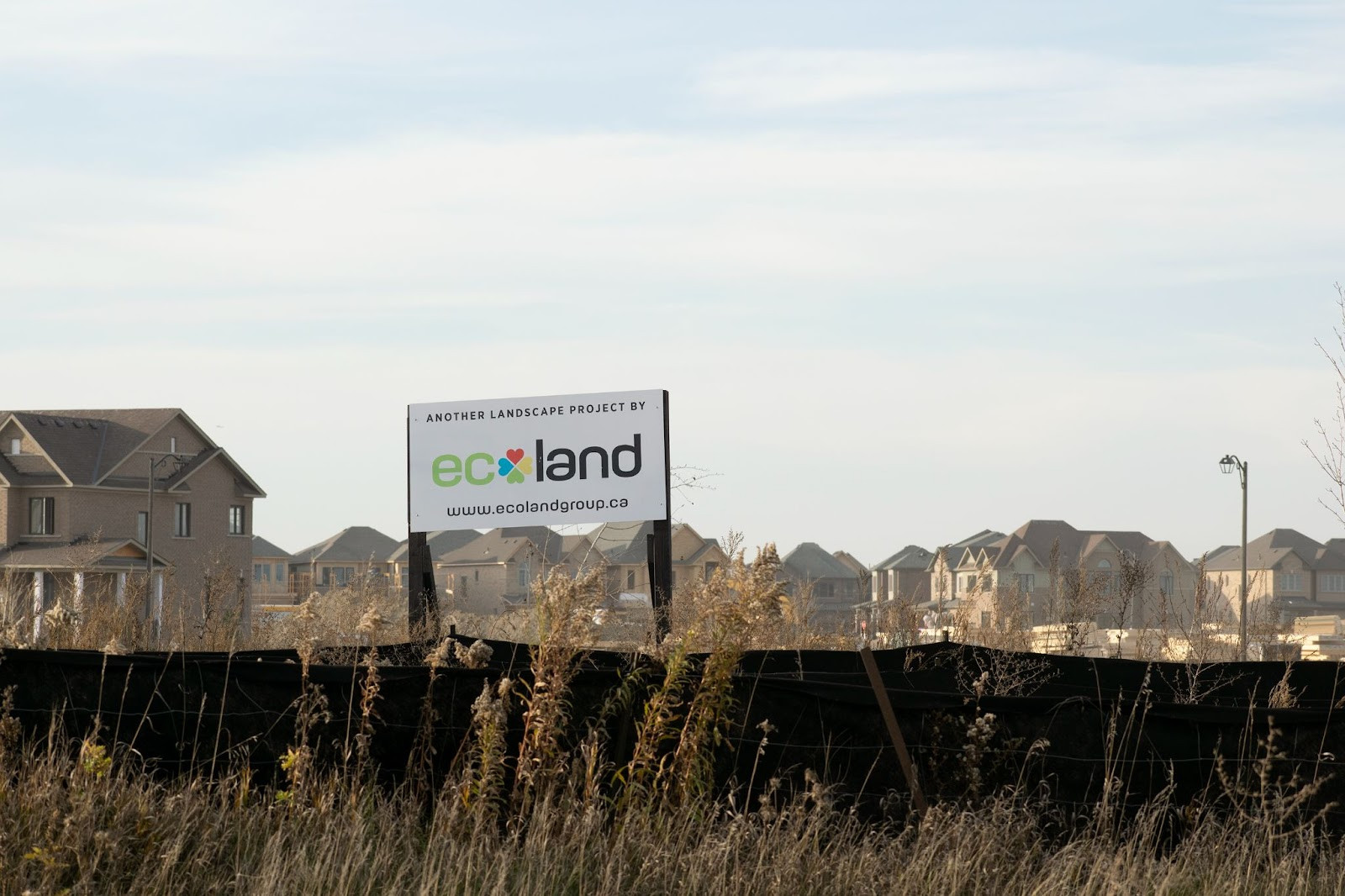
New sprawl developments in south Caledon and north Brampton continue to be built.
(Alexis Wright/The Pointer)
Bill 97 includes the term “complete community”, but uses it to replace the former term “sustainable and resilient communities”. The Toronto and Region Conservation Authority has expressed concerns over how this downplays the need to create dense, walkable “complete communities” that not only cater to the population’s basic needs, but are also sustainable and able to help mitigate the future impacts of climate change.
The description of complete communities under Bill 97 and the proposed changes to the PPS remove references to parks, active transportation and transit.
“Incorporating natural areas into complete communities is a key component of creating sustainable and livable communities,” the TRCA wrote in its draft recommendations to the province regarding the new housing legislation. “Natural areas provide opportunities for outdoor passive recreation and leisure activities and a range of environmental benefits, such as reducing urban heat island effects, improving air and water quality, reducing flooding and supporting biodiversity.”
Under the 2019 Growth Plan, municipalities across Ontario were mandated to design their Official Plans with a vision for growth out to 2051. Most of these plans included an urban boundary expansion to accommodate anticipated growth over the next 30 years.
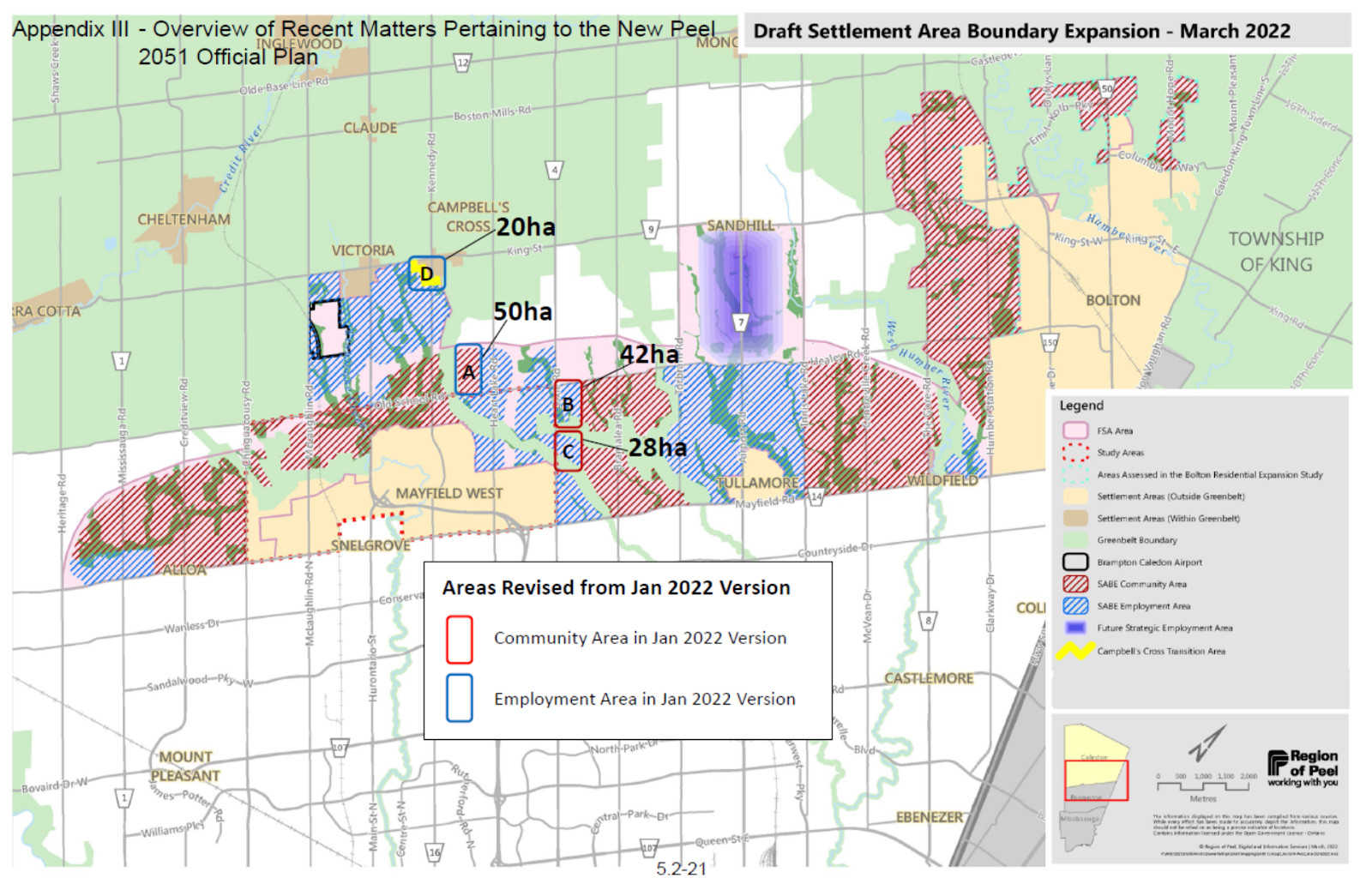
In March 2022, the Region of Peel voted to expand its urban boundary by 11,000 acres, despite ample evidence that growth could be accommodated within the previous boundary.
(Region of Peel)
Bill 97 would eradicate the concept of using built-up growth within an existing boundary allowing municipalities to consider expanding urban development out to the very edge, gobbling up all remaining farmland and greenspace even if it’s not needed. If Bill 97 is passed, the tests applied to settlement expansions will be significantly less stringent than they are under current legislation. Within the new PPS, there are no limitations on the ability of landowners to apply for development expansions. This could trigger an unsustainable amount of urban sprawl and potentially eliminate wide swaths of greenspaces and farmland remaining across the GTA.
Even before Bill 97 was tabled, the Ontario government was wielding its power to push for faster urban expansion by overwriting municipal plans that attempt to limit growth to a particular area, including in Hamilton and Waterloo Region.
During their Official Plan review, the City of Hamilton voted down a controversial plan to expand the city’s urban boundary by over 3,000 acres. Hamilton City staff said an expansion was necessary to meet provincial density targets, but the rejection by council was seen as a win for community and environmental activists who had been rallying against the expansion for much of 2021. Hamilton’s mayor at the time, Fred Eisenberger, shot down arguments by skeptics upset over the rejection of an urban boundary expansion who called it a “no-growth” decision. Rather, he called it a “where-do-we-grow” decision.
It turned out to be moot. The Ford government overruled the decision, approving an expansion of almost 5,500 acres, far greater than the initial expansion recommended by staff, a decision current Hamilton Mayor Andrea Horwath called “very concerning” in a social media post, and City Councillor John-Paul Danko called a “betrayal”.
If Bill 97 is passed, municipalities and conservation authorities have expressed major concerns about what protections will be left for boundaries that push into the Greenbelt. Shortly after the Ford government shocked environmentalists by imposing Bill 23, the Minister of Municipal Affairs and Housing, Steve Clark, announced in November the PCs would be opening up 7,400 acres of the Greenbelt for development. This includes parcels of land in the communities of King, Vaughan, Richmond Hill, Whitchurch-Stouffville, Markham, Pickering, Ajax, Clarington, Hamilton and Grimsby, which would be offset by adding 9,400 acres on the outskirts of Erin for protection under the Greenbelt Act.
Critics have pointed out that sensitive ecosystems can never be replaced once destroyed by designating other parts of unconnected lands in distant areas for protection.
On Thursday, farmers won a key victory, and Bill 97 will now be amended, but many of its sprawl-inducing or hyper verticality policy changes remain in the legislation, making it next to impossible for municipalities to accommodate the PC government’s target of 1.5 million new homes in eight years, without allowing more subdivisions or Manhattan-style high rises.
It’s the opposite approach from the smart growth policies that have helped shape a new urban vibe across much of the Greater Golden Horseshoe over the last two decades.
(Clarification: A previous version of this article suggested changes to the Provincial Planning Statement are part of the proposed Bill 97. They are two separate initiatives.)
Email: [email protected]
Twitter: @rachelnadia_
At a time when vital public information is needed by everyone, The Pointer has taken down our paywall on all stories relating to the pandemic and those of public interest to ensure every resident of Brampton and Mississauga has access to the facts. For those who are able, we encourage you to consider a subscription. This will help us report on important public interest issues the community needs to know about now more than ever. You can register for a 30-day free trial HERE. Thereafter, The Pointer will charge $10 a month and you can cancel any time right on the website. Thank you
Submit a correction about this story


